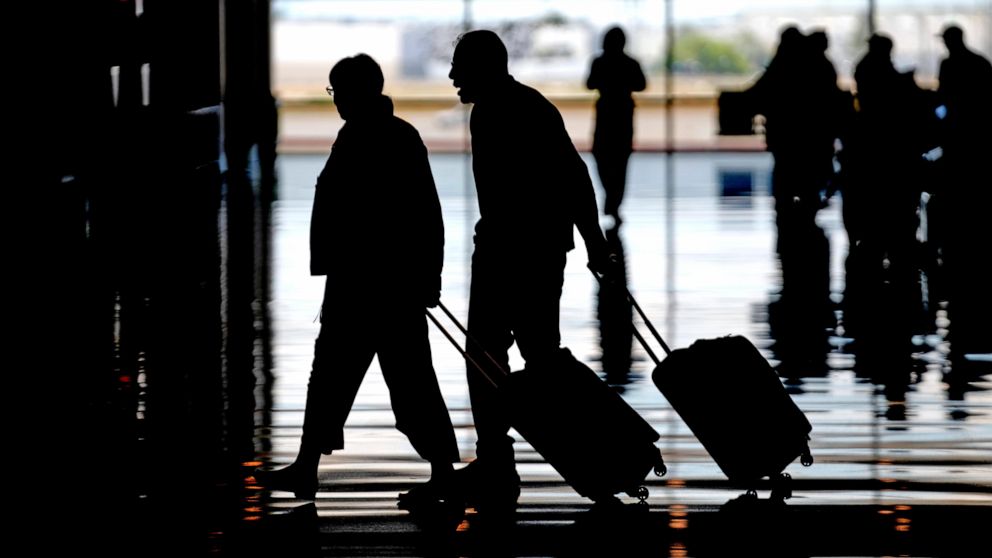Potential Disruption of Flights Starting This Weekend Due to 5G Wireless Signals
In recent years, the world has witnessed significant advancements in wireless technology, with the introduction of 5G networks being one of the most notable developments. Promising lightning-fast speeds and ultra-low latency, 5G has the potential to revolutionize various industries, including healthcare, transportation, and communication. However, as the implementation of 5G networks expands, concerns have arisen regarding its potential interference with aviation systems, particularly in relation to flight safety.
Starting this weekend, there is a growing concern among aviation experts that the deployment of 5G wireless signals could disrupt flights and compromise the safety of passengers and crew members. The issue primarily revolves around the use of certain radio frequencies that are adjacent to those used by critical aviation systems, such as altimeters.
Altimeters are essential instruments used by pilots to measure altitude, which is crucial for safe takeoffs, landings, and navigation during flights. These instruments rely on radio altimeters that operate within the 4.2 to 4.4 gigahertz (GHz) frequency range. However, some 5G networks are set to operate in frequencies adjacent to this range, specifically within the 3.7 to 3.98 GHz band. The concern is that the powerful signals emitted by 5G towers could bleed into the altimeter frequency band and interfere with their accurate readings.
Aviation industry experts argue that even a slight disruption in altimeter readings could have severe consequences. Pilots rely heavily on accurate altitude measurements to avoid collisions with other aircraft, navigate through adverse weather conditions, and execute safe landings. Any interference or inaccuracies in these readings could potentially lead to catastrophic accidents.
To address these concerns, aviation authorities and telecommunication companies have been engaged in discussions and negotiations for several months. In response to the potential risks posed by 5G signals, the Federal Aviation Administration (FAA) has issued warnings and restrictions on certain flights. The FAA has advised airlines to avoid flying certain aircraft types equipped with older radio altimeters in areas where 5G signals are strongest, particularly near airports.
Additionally, the FAA has requested telecommunication companies to implement mitigation measures to minimize the risk of interference. These measures include reducing the power levels of 5G signals near airports and implementing buffer zones to ensure a safe distance between 5G towers and critical aviation systems. However, it is important to note that these measures are not foolproof, and concerns remain regarding the potential impact of 5G signals on flight safety.
The aviation industry is not the only sector expressing concerns about the potential disruption caused by 5G signals. Weather forecasting agencies have also raised alarms, as they heavily rely on satellite data to predict and monitor weather patterns. Some satellite frequencies used for weather monitoring are adjacent to the frequencies allocated for 5G networks. Interference from 5G signals could potentially degrade the accuracy of weather forecasts, leading to inadequate warnings for severe weather events such as hurricanes and storms.
As the deployment of 5G networks continues to expand worldwide, it is crucial for aviation authorities, telecommunication companies, and other stakeholders to work collaboratively to address these concerns. Striking a balance between the benefits of 5G technology and ensuring flight safety is of utmost importance. Ongoing research and testing are necessary to fully understand the potential risks and develop effective mitigation strategies.
In conclusion, the potential disruption of flights due to 5G wireless signals starting this weekend has raised significant concerns within the aviation industry. The proximity of certain radio frequencies used by aviation systems, such as altimeters, to those allocated for 5G networks has sparked fears of interference and compromised flight safety. While measures have been taken to mitigate these risks, ongoing efforts are necessary to ensure that the benefits of 5G technology do not come at the expense of aviation safety.



